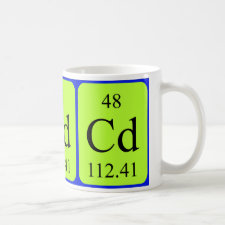
Authors: Aravind A, Mathew B
Article Title: Tailoring of nanostructured material as an electrochemical sensor and sorbent for toxic Cd(II) ions from various real samples.
Publication date: 2018
Journal: Journal of Analytical Science and Technology
Volume: 9
Issue: (1)
Page numbers: ArticleNo22.
DOI: 10.1186/s40543-018-0153-1
Abstract: The aim of the present study is the fabrication of electrochemical sensor and sorbent for toxic Cd(II) ion using ion-imprinting technique on vinyl-functionalized multiwalled carbon nanotube. Multiwalled carbon nanotube-based ion-imprinted polymer (MWCNT-IIP) were synthesized using meth acrylic acid as the functional monomer, N,N'methylene-bis-acrylamide as the cross linking agent, and potassium peroxo disulphate as an initiator. The template and porogen used were cadmium chloride and water. To know the importance of MWCNT, ion-imprinted polymer without MWCNT was also prepared. For the purpose of comparison, non-imprinted polymers were also synthesized. The synthesized products were analyzed by FT-IR, XRD, TEM, EDAX, and TGA. An electrochemical sensor was made up by modifying platinum electrode with MWCNT-IIP. Experimental factors that control the routine of the sensor were investigated and optimized. Under optimal conditions, a calibration curve was obtained with a detection limit of 0.03 μM by using differential pulse voltammetric technique. Selectivity studies show irrelevant significance with Zn (II), Cu (II), and Ni (II) ions. The feasibility of modified platinum electrode shows a prospective application in real water sample collected from a lake, pigments, cosmetics, and fertilizers. The synthesized nanostructured material is also used for the extraction of Cd(II) ion from real water samples. The maximum adsorption of Cd(II) by various imprinted and non-imprinted sorbents was calculated, and it was found that maximum adsorption takes place at pH 6. The kinetic studies show that the adsorption of Cd(II) increases with time and reaches equilibrium at 70 min and the kinetic data follow pseudo-second-order kinetics. The adsorption data fitted to the Langmuir adsorption model which confirms the monolayer formation of an IIP layer on MWCNT surface. The selectivity co-efficient of the imprinted sorbent shows high selectivity and specificity towards Cd(II) ion than other metal ions
Template and target information: cadmium ion, Cd(II)
Author keywords: Cadmium (II), molecular imprinting, MWCNT, MWCNT-IIP, cyclic voltammetry



Join the Society for Molecular Imprinting

New items RSS feed
Sign-up for e-mail updates:
Choose between receiving an occasional newsletter or more frequent e-mail alerts.
Click here to go to the sign-up page.
Is your name elemental or peptidic? Enter your name and find out by clicking either of the buttons below!
Other products you may like:
 MIPdatabase
MIPdatabase









